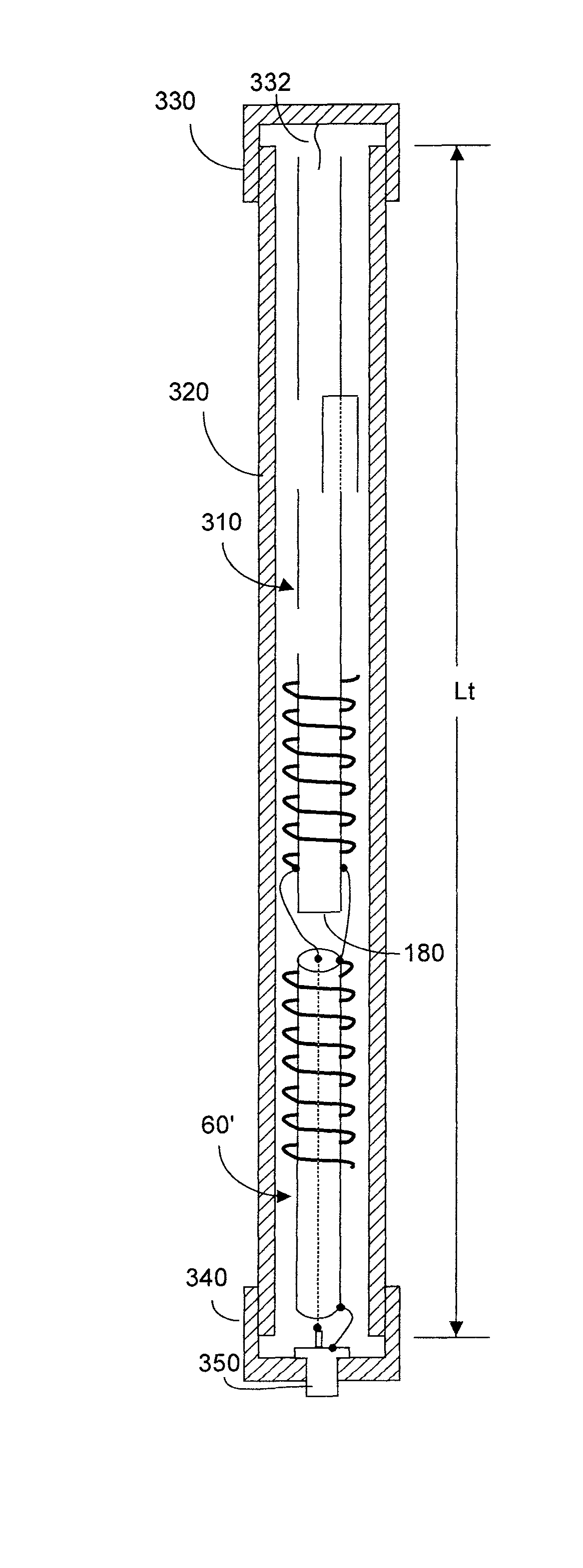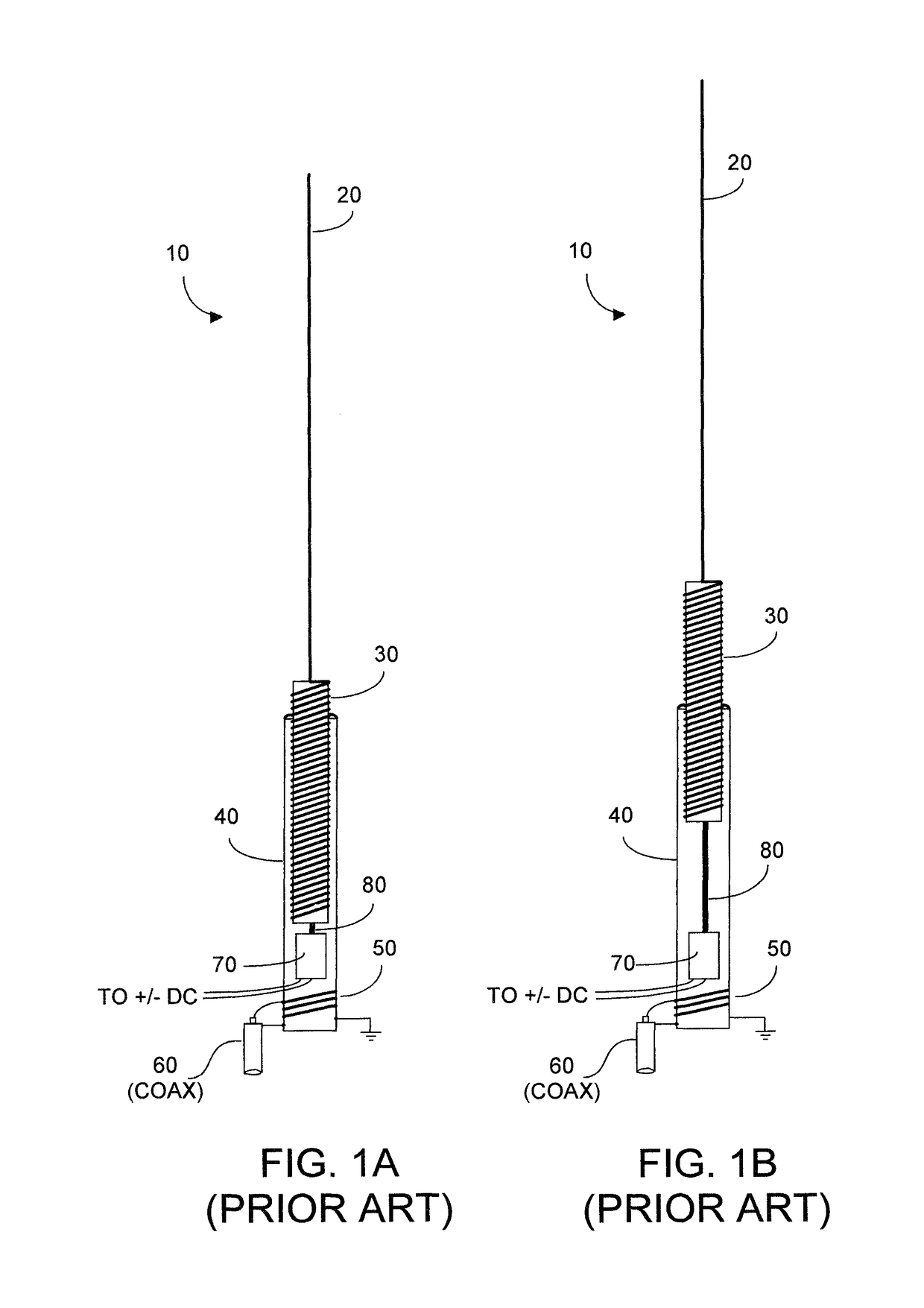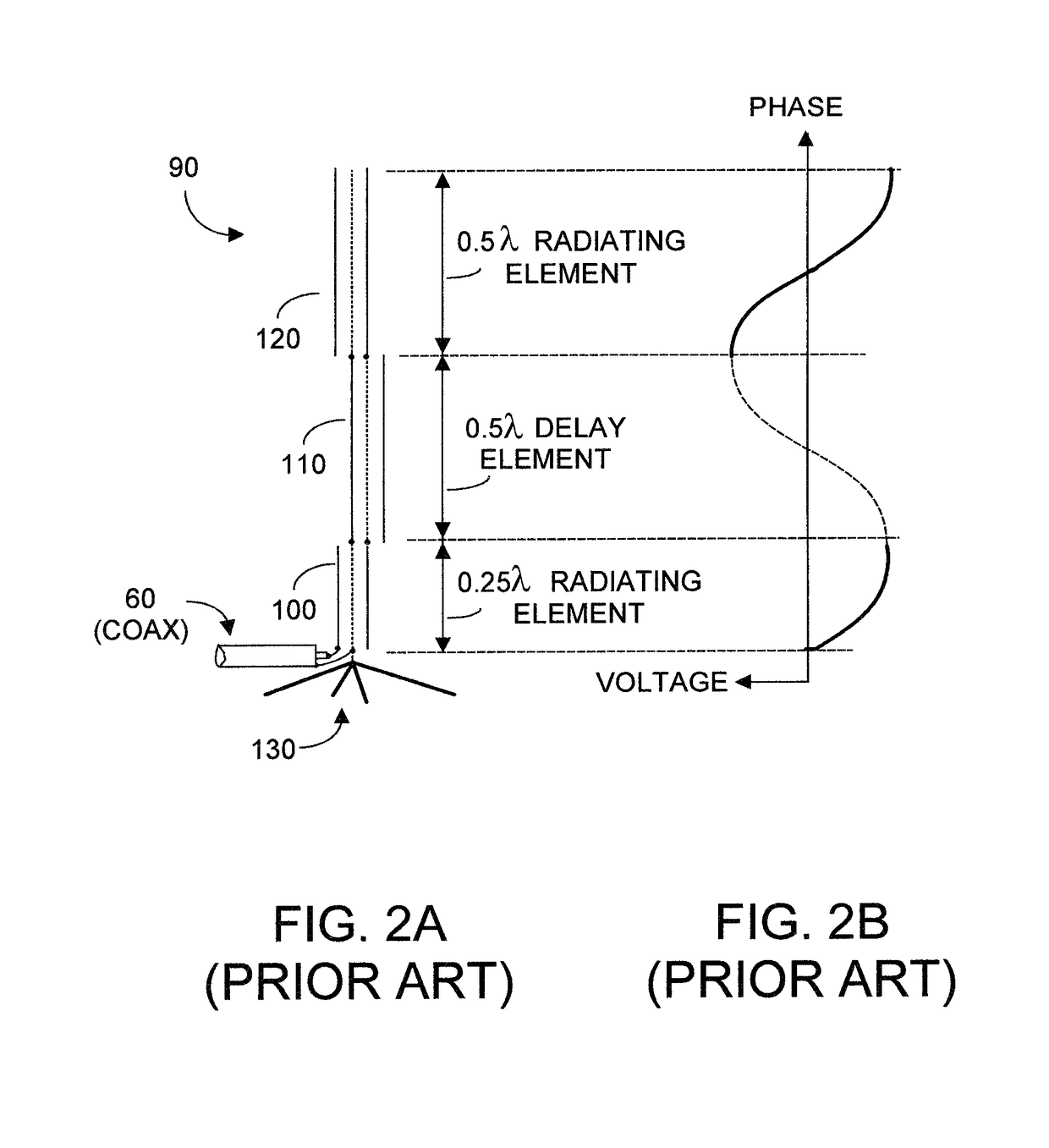Radial-free collinear omni-directional triband half wavelength antenna with virtual ground, single coaxial cable feedpoint, and with minimal interaction of adjustment between bands
a triband half wavelength, collinear technology, applied in the direction of antennas, antenna details, antenna feed intermediates, etc., can solve the problems of increasing manufacturing costs, reducing returns effectively, lessening robustness and portability, etc., to achieve good omni-directional rf radiation performance, good swr performance, and more gain
- Summary
- Abstract
- Description
- Claims
- Application Information
AI Technical Summary
Benefits of technology
Problems solved by technology
Method used
Image
Examples
Embodiment Construction
[0052]FIG. 8 depicts applicant's initial attempt to design a triband antenna. Antenna 280 comprises a DBJ-1 (WB6IQN) dual-band VHF-UHF stacked J-pole twinlead antenna portion 260 (similar to antenna 260 in FIG. 6A), comprising sections 262, 264, 266, and 268. However at the bottom of the passive non-radiating impedance transform section 262 of VHF-UHF J-pole 260 there is coupled a 220 MHz 0.5″ diam. copper J-pole antenna portion 288 with copper quarter-wavelength stub 284 (similar to the 220 MHz portion 284 of antenna 280 in prior art FIG. 7). Two lengths of coaxial cable, e.g., RG174A or the like, are disposed within copper antenna portion 288. The center conductor of one coaxial cable is coupled to lead 2 of the above-lying stacked J-pole assembly, and the center conductor of the other coaxial cable exits via an entry hole from member 288 and is soldered to the shell of copper stub member 286. The ground shield of this second coaxial cable is soldered the copper housing 288 near t...
PUM
 Login to View More
Login to View More Abstract
Description
Claims
Application Information
 Login to View More
Login to View More - R&D
- Intellectual Property
- Life Sciences
- Materials
- Tech Scout
- Unparalleled Data Quality
- Higher Quality Content
- 60% Fewer Hallucinations
Browse by: Latest US Patents, China's latest patents, Technical Efficacy Thesaurus, Application Domain, Technology Topic, Popular Technical Reports.
© 2025 PatSnap. All rights reserved.Legal|Privacy policy|Modern Slavery Act Transparency Statement|Sitemap|About US| Contact US: help@patsnap.com



